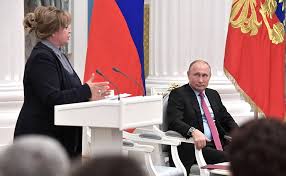(RAD) Abstract: Although current political tensions hinder international studies in the Arctic, science partnerships helped tunnel through barriers during the Cold War. One of the most successful models of U.S.–Russian collaboration was the “Environmental Bilateral” agreement of 1972. During an era of political tension, it brought together a multidisciplinary group of top professionals and early carrier scientists in both countries. Acting through science diplomacy, this group communicated sound scientific messages about global climate change to top level policymakers well before the United Nations’ Intergovernmental Panel on Climate Change came into existence. Similar models today can help the U.S. and Russia remove obstacles for scientific collaboration and implement the 2017 Agreement on Enhancing International Arctic Scientific Cooperation signed by both countries.
Read More © Russian Analytical Digest
Co-authors: Oleg Anisimov, Kelsey Nyland, and Alexander Sergunin











